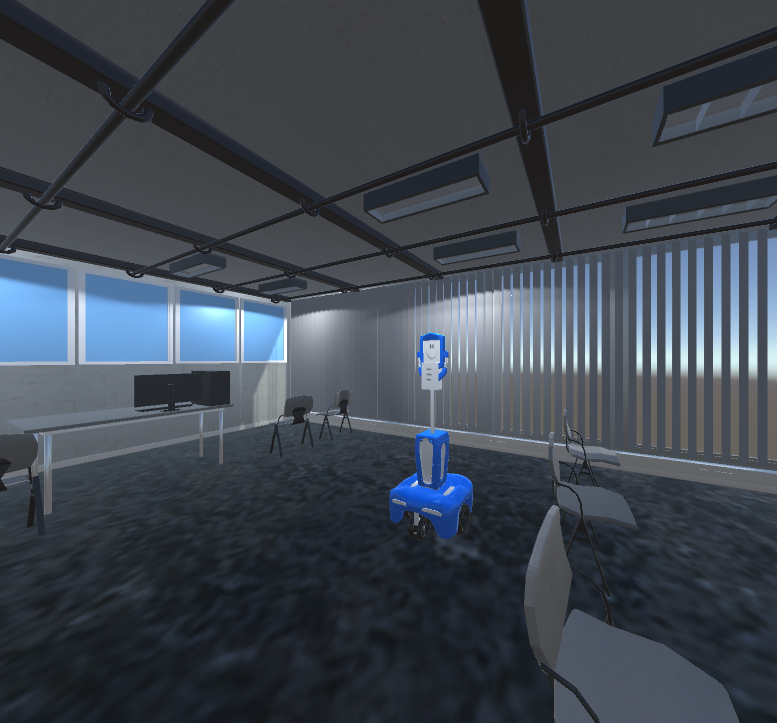Human-Robot Proxemics
Keywords: Human-Robot Interaction, Proxemics, Virtual Reality
Proxemics in Human-Robot Interaction in Virtual Reality
During my masters, together with a fellow student, I designed and conducted a study on Human-Robot proxemics in virtual reality (VR). In this project, we studied whether it is possible to measure personal distance in human-robot interaction in virtual reality. Two iterations of user studies were conducted to test our newly developed system.

The system consisted of a virtual representation of an experiment room in which a user was able to move around and interact with a virtual Giraff robot. In the first iteration, the influence of likeability and self-embodiment on personal space were studied. It became apparent that the robot agent needs to have some sort of face, because having no face makes people experience the robot agent as an object.
Moreover, self-embodiment has shown to be important for estimating distances in virtual reality. Based on these findings, the we enhanced the system and a second iteration of user studies was done. In an experiment, the behavior of participants in an approach task in the virtual environment was compared with behavior in the same task in the real experiment room. The virtual environment resembled the appearance of the real room and participants were provided self-embodiment. Based on personal space zones found in the literature, it was evaluated whether there are any differences in measured personal space in virtual reality compared to the real setting.
The results showed that distances found in virtual reality are similar to those in a real environment. The average minimal distance participants kept to the robot was 0.4 meters which lies within the intimate zone. An explanation for this relatively small distance may be the nature of the task that was used. The task involved a static, non-moving robot agent, which might cause people to get closer to the robot agent. Thus, future research needs to investigate whether a dynamic task provides the same distances in reality compared to virtual reality and to further investigate the influence of self-embodiment on the estimation of distances.
